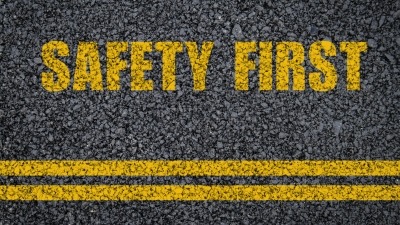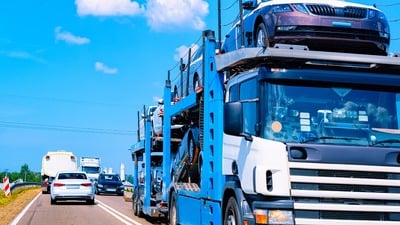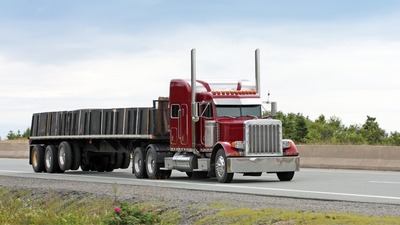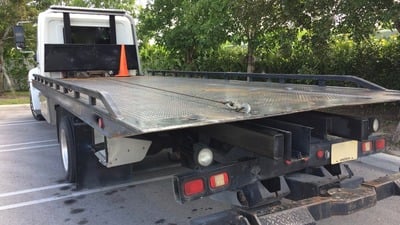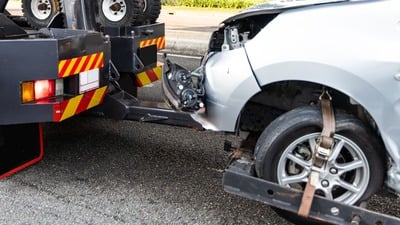Introduction to Roadside Safety for Towing Professionals
When you're a towing professional, the roadside is your office. But it's not your average desk job. It can be unpredictable and, at times, dangerous. That's why understanding and using the right safety equipment is not just smart; it's essential for keeping you and others safe. Firstly, high-visibility clothing is a must. Whether it's day or night, being easily seen by drivers is vital. Then, we have safety cones and warning triangles. Placing these around your work area warns oncoming traffic well in advance, giving them time to slow down or change lanes. Lighting is another crucial piece of gear. From flashing lights on your vehicle to handheld spotlights, ensuring you’re visible under any conditions is key. Finally, communication devices keep you in touch with your team and emergency services if the situation escalates. Being thorough in your safety practices doesn't just protect you; it sets a professional standard in the towing industry that helps save lives. So, gear up properly, stay alert, and remember, safety is the name of the game.
Essential Roadside Safety Equipment Checklist
When heading out on the job, towing professionals need to pack more than just their expertise. For your safety and that of others on the road, it's crucial to have the right equipment. Here’s a straightforward checklist to help you stock up:
- High-visibility vests: These are a must. Whether it’s day or night, being visible to other drivers greatly reduces the risk of accidents.
- Safety cones and warning triangles: Place these around your work area to alert oncoming traffic. This gives drivers a heads-up to slow down or move over.
- Flashlights and extra batteries: You never know when you’ll be working in the dark. A good, bright flashlight can be a lifesaver.
- First Aid Kit: For any minor injuries on the job, it’s always better to be prepared.
- Fire extinguisher: In case of a small fire, having an extinguisher within reach can prevent a major disaster.
- Jump starter kit: Dead batteries are a common issue, and with this kit, you can get vehicles moving without needing another vehicle for a jump.
- Tow ropes and chains: Obviously essential, but make sure they’re in good condition before every call.
- Gloves and protective eyewear: Protect your hands and eyes from harm. This seems simple but is often overlooked.
By ensuring you have all these items, you’re not just protecting yourself; you’re upholding a high standard of safety for everyone on the road. Stay safe, be prepared.
Understanding the Importance of High-Visibility Clothing
High-visibility clothing isn't just a fashion statement on the job; it's your first layer of defense. Imagine you're on the side of a busy highway, focused on towing a broken-down car. You need to know that the drivers speeding by can see you clearly, regardless of the time of day or weather conditions. That's where high-visibility clothing comes into play. These aren't your average jackets or vests. They're designed to scream "I'm here!" to anyone glancing in your direction. The bright colors, usually neon yellow, orange, or lime, catch the eye even from a distance. But it doesn't stop at the color. These pieces of clothing have reflective strips that shine bright when headlights hit them, making you noticeable even in the dead of night. And here's the kicker: it's not just about making sure you're seen. Wearing high-visibility clothing could very well save your life. It's that serious. So next time you gear up for a towing job, remember, that neon vest is more than just part of the uniform. It's your shield against the dangers of the roadside.
The Role of Cones and Warning Triangles in Roadside Safety
Cones and warning triangles aren't just bits of plastic and metal you see scattered around a broken-down vehicle—they're crucial for roadside safety, especially for towing professionals. Think of them as the guardians of the breakdown scene. They do a pretty straightforward job: grab attention and guide traffic away from the towing operation. Here’s the deal: setting these up in visible patterns makes sure drivers slow down or move over. It’s all about giving everyone on the road a heads-up, reducing the risk of accidents. Now, while both serve to alert oncoming traffic, there's a slight difference. Cones are great for marking out a safe working area around the tow truck and the vehicle being towed. They're lightweight, easy to set up, and highly visible. Warning triangles, with their ability to reflect light at night, are perfect for long-distance alerts. They're like saying, "Hey, something’s up ahead. Be careful." In many places, it’s not just good practice to use these; it’s the law. So, not only do cones and warning triangles protect you, the professionals, and the stranded driver, but they also keep all road users safe. Simple, right? But incredibly effective.
Importance of Lighting: Flashlights and Flares
For towing professionals, good lighting isn't just useful; it's crucial for safety, especially when working roadside at night or in low-visibility conditions. Flashlights and flares are two key pieces of equipment that can make all the difference. A strong, reliable flashlight can help you see what you're doing, whether you're hooking up a vehicle or navigating a dark area. More than just lighting your path, it ensures you're visible to others, reducing the risk of accidents. Flares take it a step further. They are essential for signaling to oncoming traffic that there's a roadside operation in progress. When deployed correctly, flares create a safety zone around the work area, alerting drivers from a distance and giving them time to slow down or change lanes. Remember, your primary goal is to ensure your safety and that of the stranded vehicle's occupants while minimizing the risk for all road users. By using flashlights and flares effectively, you're not just illuminating the task at hand; you're protecting lives.
How to Use Roadside Emergency Signs Effectively
When you're out there, towing on the roadside, emergency signs aren't just tools—they're your best mates in keeping you safe. Let's cut to the chase: using these signs effectively can mean the difference between a safe day at work and a trip to the hospital. Here's how you make sure you and everyone else stays safe. First up, always place your signs at a distance. This gives drivers enough time to see the warning and slow down. The rule of thumb is about 30 feet from where you're working, but if you're on a fast-moving road, go further. Visibility is your next big play. Make sure your signs are clear and can be seen from a distance. This might mean wiping them down if they get dirty or even using lights or reflective materials if you're working at night or in bad weather. And speaking of weather, always secure your signs. A windy day shouldn't mean a flying sign. Use sandbags or stakes to keep them in place. Lastly, always check the signs before you head out. A missing letter or a faded arrow can confuse drivers more than it helps. Keep them in good shape and they'll take care of you. There you have it. Keep it simple, keep it safe, and let those roadside emergency signs do their job.
First Aid Kits: A Must-Have in Roadside Safety Gear
Every towing professional knows that accidents and injuries can happen at any time on the road. That's why having a first aid kit is non-negotiable. It's not just about complying with safety standards; it's about being prepared for any situation. A well-stocked first aid kit should include basics like bandages, antiseptic wipes, adhesive tape, scissors, tweezers, and gloves. Don't forget items for more severe injuries, such as sterile gauze, tourniquets, and splints. It's not enough to just have these items; knowing how to use them properly is crucial. Regular training on first aid procedures can make a significant difference in emergencies. Remember, in the world of towing, being equipped with the right first aid supplies could save a life – maybe even your own. So, check your kit regularly, restock as necessary, and stay prepared.
Communication Tools for Towing Professionals
In the towing business, staying in touch is key. Think about it. You're on the road, situations change fast. Say, a car breaks down on a busy highway or a weather condition suddenly turns bad. You need a solid way to communicate, not just with your team, but also the people you're helping and possibly emergency services. First off, you've got your mobile phone. It's basic, sure, but it's also crucial. Texts, calls, even apps designed for roadside assistance professionals make it a must-have. Then, there are two-way radios. These are tough, reliable, and get the message across without relying on cell service, which let's be honest, can be hit or miss in remote areas. Plus, they help in coordinating with the team on scene quickly and efficiently. Another important tool? Mobile data terminals or MDTs. These installed devices in your tow truck give you real-time data, maps, and communication capabilities directly with your dispatch center. This setup means you're getting information fast and accurately, directly where it's needed – on the move. So, yeah, sharp communication tools are not just fancy gadgets; they're essentials in the towing game. Keep your tech toolbox equipped, and you're not just towing; you're towing smart.
Best Practices for Using Roadside Safety Equipment
When using roadside safety equipment, getting the basics right can make all the difference between a safe towing operation and a risky one. Always put on high-visibility clothing. This simple step makes you stand out, day or night, ensuring drivers can see you from a distance. Set up safety cones or triangles around the worksite. These act as a clear, visual boundary for passing traffic, buying you a safety buffer. Use flashing lights on your tow truck. Whether it’s bright daylight or pitch night, flashing lights grab attention, signaling to others that there’s work in progress. Check your equipment regularly. Before you head out, make a quick but thorough check of all your safety gear. Make sure lights are working, reflective gear is clean and visible, and that cones aren’t damaged. Remember, using roadside safety equipment isn’t just about following rules; it’s about making smart choices that protect you, your clients, and other road users. Keep it simple, stay visible, and always be prepared.
Wrapping Up: Maintaining Safety Standards on the Road
Keeping everyone safe on the road is a top priority, especially for towing professionals. It all boils down to having the right gear and knowing how to use it. Always make sure your safety equipment is in good shape. If something's worn out or broken, replace it. Regular checks and maintenance can save lives. Use lights and reflective materials to stand out, especially at night or in bad weather. Practice safe towing methods every time. This isn't just about following the law; it's about making sure you, and everyone else on the road, get where they're going safely. Remember, cutting corners can lead to accidents. Stay sharp, stay prepared, and stay safe.

